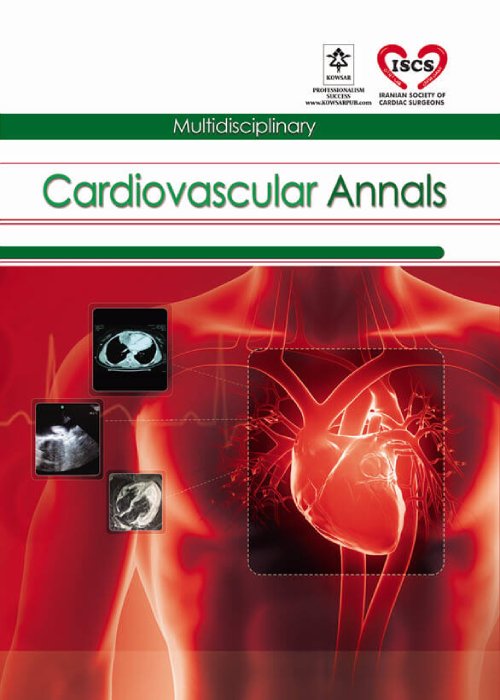فهرست مطالب

Multidisciplinary Cardiovascular Annals
Volume:14 Issue: 2, Jul 2023
- تاریخ انتشار: 1402/11/02
- تعداد عناوین: 5
-
-
Page 1
Ischemia is a common condition in the population and has become one of the leading causes of mortality in recent years. It occurs due to a shortage of oxygen in the cell caused by inadequate blood flow, leading to the formation of free radicals. These free radicals can bind to the phospholipids in the cell membrane, resulting in proxy radicals and lipid hydroperoxidation. Malondialdehyde (MDA) is a cytotoxic byproduct of lipid peroxidation that causes cell damage and necrosis by rupturing the cell membrane. Subsequently, mitochondrial dysfunction related to fatty acid oxidation can develop, further exacerbating the damage caused by ischemia. Reactive oxygen species (ROS) produced in mitochondria have been shown to elevate oxidative phosphorylation disorder and disrupt the functioning of complexes I and IV. These enzyme activities can be restored to normal levels by activating antioxidant enzymes such as superoxide dismutase (Mn-SOD) and catalase, thereby strengthening the antioxidant defense system. Various antioxidants have been found to have protective effects. In this review, we compare the antioxidant effects of various plants and tannins that have been studied up to this point on myocardial ischemia. We also explain some of the cellular and molecular pathways that have been investigated to protect the myocardium against ischemia-reperfusion injury.
Keywords: Ischemia, Antioxidant, ROS (Reactive Oxygen Species), NO (Nitric Oxide), Cardioprotection, Tannins -
Page 2Background
The coronavirus pandemic in 2020 was one of the biggest issues in the world, causing catastrophic respiratory, multi-organ problems and deaths. These effects are caused by both the virus itself and the drugs used to treat patients. Mortality rates were higher among those with underlying diseases. Patients with a history of cardiovascular disease (CVD) and those with a high risk of myocardial involvement by COVID-19 are particularly vulnerable to mortality. Clinicians and policymakers should consider these findings when developing risk stratification models. According to these studies, coronary artery disease (CAD) may increase mortality and the need for renal replacement therapy, primarily because of comorbidities rather than a direct effect of the disease itself.
ObjectivesTo determine if all risk factors affected mortality, this study examined all risk factors.
MethodsIn the present study, patients with a positive history of CVD, hypertension, diabetes mellitus, dyslipidemia, hypothyroidism, chronic kidney disease and chest computed tomography (CT) scan compatible with coronavirus, who were admitted to intensive care unit (ICU) and underwent mechanical support, were included.
ResultsThe study included 150 patients who were randomly selected. A total of 43% females and 57% males made up the study population, with a mean age of 65.3 ± 13.5. Creatinine levels in the mortality group were 1.60 mg/dL, while in the non-mortality group, they were 1.19 mg/dL. Hypertension was the most common risk factor among patients (60.9%). The mortality rate was 10.6% (16 out of 150 patients). There was a significant association between acute kidney injury during admission (P value = 0.005) and past use of corticosteroids (P value = 0.016), while the need for dialysis (P value = 0.052) was not significant.
ConclusionsThere was a significant difference in creatinine mean between the groups with and without mortality (P = 0.044) between the two groups. Mortality was not significantly affected by other factors. In addition, our study indicated that CAD, as well as other cardiac diseases and risk factors, can lead to higher mortality rates and the need for renal replacement therapy, which is largely due to the burden of comorbidities, rather than their direct effect.
Keywords: COVID-19, Corticosteroid, Acute Kidney Injury, Dialysis, Cardiovascular Disease -
Page 3
Investigating the source of fever of unknown origin (FUO) is usually one of the diagnostic challenges for clinicians. Furthermore, it is one of the most important causes that should always be considered is cardiac causes. In this case, we evaluated a patient with a cardiogenic cause of FUO; despite all the studies, no definite cause was found, but it responded to empiric treatment.
Keywords: Cardiac Mass, Fever of Unknown Origin, Empiric Treatment

